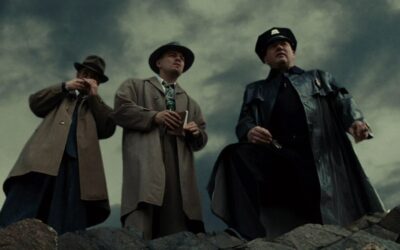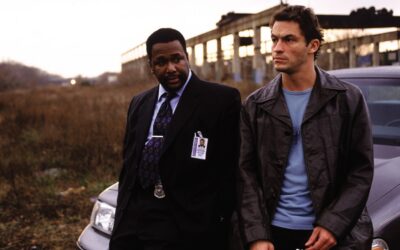
Criminals in Plain Sight
The art of disguise has long been a staple in the world of crime fiction. Criminals, detectives, and innocent bystanders alike have all donned various guises to remain undetected, deceive others, or blend into the background. This fascinating technique allows characters to navigate the dark and twisted world of crime without revealing their true intentions. Here, we will delve into the most ingenious disguises in crime fiction, exploring the cunning and creativity of criminals hiding in plain sight.
Sherlock Holmes: Master of Disguise
One of the most famous detectives in the history of crime fiction, Sherlock Holmes, is well-known for his skills in deduction, logic, and observation. However, Holmes is also a master of disguise, using his abilities to infiltrate criminal circles or slip by unnoticed. Sir Arthur Conan Doyle’s iconic character often adopts the personas of a beggar, a clergyman, or an old woman, altering his voice and demeanor to suit the role. In “A Scandal in Bohemia,” Holmes disguises himself as a groom to obtain information about Irene Adler, proving that even the great detective must sometimes rely on deception to solve his cases.
Tom Ripley: The Talented Mr. Ripley
Patricia Highsmith’s “The Talented Mr. Ripley” introduces us to Tom Ripley, a cunning and dangerous criminal who excels at impersonation. After being commissioned to bring a wealthy man’s son back to America, Ripley becomes obsessed with the target’s life, eventually killing him and assuming his identity. Ripley meticulously studies his victim’s mannerisms, handwriting, and personal style, allowing him to deceive friends and family alike. As the novel progresses, Ripley’s talent for disguise allows him to evade capture and continue his dark and twisted game of impersonation.
Professor James Moriarty: The Napoleon of Crime
No discussion of ingenious disguises in crime fiction would be complete without mentioning Professor James Moriarty, Sherlock Holmes’s arch-nemesis. As the mastermind behind a vast criminal network, Moriarty operates under a veil of secrecy, using multiple aliases and disguises to keep his true identity hidden. In “The Final Problem,” Holmes describes Moriarty as “a man of good birth and excellent education, endowed by nature with a phenomenal mathematical faculty.” This brilliant villain moves through society unnoticed, carefully concealing his criminal activities and evading the watchful eye of the great detective.
Arsène Lupin: The Gentleman Thief
Arsène Lupin, the charming and elusive gentleman thief created by Maurice Leblanc, is renowned for his ability to adopt various disguises to commit his crimes. Lupin, much like Sherlock Holmes, uses his keen powers of observation and an exceptional talent for disguise to infiltrate high society, evade capture, and outsmart his opponents. Throughout the series, Lupin adopts countless personas, including an elderly professor, a Russian prince, and a policeman. These skillful deceptions make him one of the most iconic and enduring characters in crime fiction.
Jane Marple: An Unassuming Detective
Agatha Christie’s Miss Jane Marple is a brilliant detective with a penchant for solving mysteries in her small English village. Despite her seemingly unassuming appearance, Marple uses her keen observational skills and deep understanding of human nature to solve crimes. Often underestimated by those around her, Marple’s unassuming exterior is a perfect disguise. As she quietly observes the people and events in her village, Marple quietly uncovers the truth behind the most perplexing mysteries, proving that sometimes the most ingenious disguises are the ones we least expect.
Hannibal Lecter: A Cannibal in Plain Sight
Thomas Harris’s chilling character, Dr. Hannibal Lecter, is a brilliant psychiatrist with a dark secret: he is also a cannibalistic serial killer. In “The Silence of the Lambs,” Lecter’s intelligence and cultured demeanor make him appear as an ordinary professional. However, his ability to hide his true nature allows him to move through society undetected, preying on his unsuspecting victims. Lecter’s deceptive charm and sophistication make him one of the most terrifying and fascinating criminals in crime fiction.
Keyser Söze: The Devil Himself
“The Usual Suspects,” a neo-noir crime thriller written by Christopher McQuarrie, introduces the enigmatic character Keyser Söze, a ruthless criminal mastermind who remains hidden in plain sight. As the story unfolds, it becomes apparent that Söze has been posing as one of the main characters, a seemingly harmless and unassuming man with cerebral palsy. By adopting this persona, Söze manipulates the other characters and orchestrates a grand deception, ultimately evading capture and disappearing into the shadows.
Don Corleone: The Godfather
Mario Puzo’s “The Godfather” presents readers with the powerful and secretive Vito Corleone, the head of the Corleone crime family. Although a feared and respected figure in the criminal underworld, Don Corleone’s public persona is that of a respectable businessman and family man. By maintaining this façade, Corleone is able to shield his true nature and avoid the scrutiny of law enforcement. The duality of Don Corleone’s character demonstrates the power of blending into society while secretly controlling a vast criminal empire.
Frank Abagnale Jr.: Catch Me If You Can
In “Catch Me If You Can,” author Frank Abagnale Jr. recounts his life as a notorious con artist and master of disguise. Posing as an airline pilot, a doctor, and a lawyer, Abagnale successfully evades capture for years. His talent for impersonation allows him to fool countless people, including seasoned law enforcement officials. Abagnale’s life story is a testament to the power of deception and the extent to which a skilled individual can manipulate appearances to achieve their goals.
Amy Dunne: Gone Girl
In Gillian Flynn’s psychological thriller “Gone Girl,” readers are introduced to Amy Dunne, a woman who meticulously stages her disappearance and frames her husband for her alleged murder. Dunne’s carefully constructed plan involves altering her appearance, assuming a new identity, and leaving a trail of clues to implicate her husband. The depth of Dunne’s deception is both chilling and impressive, demonstrating the lengths to which a person will go to manipulate the world around them.
The most ingenious disguises in crime fiction demonstrate the power of deception, cunning, and creativity. Whether it’s a master detective hiding in plain sight, a criminal adopting the persona of their victims, or an unassuming character concealing a dark secret, these characters remind us that appearances can be deceiving. Crime fiction will always be a realm where the lines between truth and deception are blurred, and the art of disguise will continue to captivate and intrigue readers for years to come.
More Crime Features
Literary Crime
Where Depth Meets Deceit
Criminal Fashion
Iconic Outfits and Styles in Crime Fiction
Ethics in Crime Fiction
Exploring Morality in Law and Order



